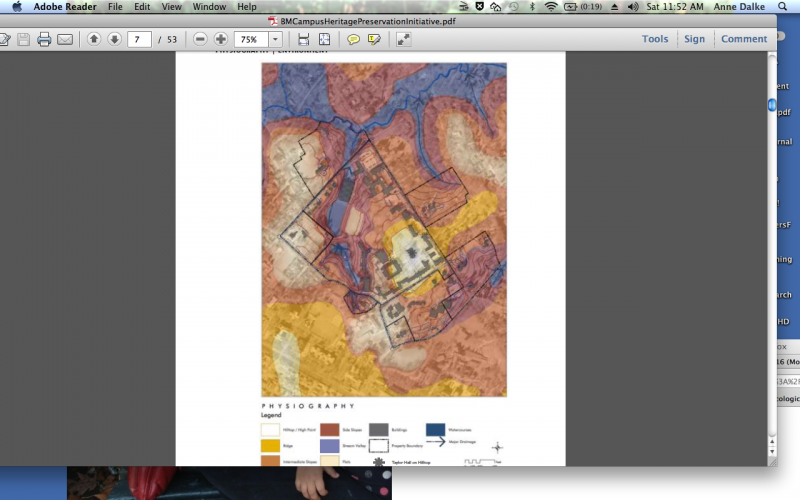Serendip is an independent site partnering with faculty at multiple colleges and universities around the world. Happy exploring!
Minecraft connections
During class, someone said that in Minecraft "like in SIMs, you are a person and you are creating a world" while trying to sum up the satisfying appeal to the game. I completely felt this as well while playing. There was something satisfying to being able to control my environment and decide my own course. This is a freedom I don't always have in everyday life because of time constraints, responsibilities, and money. These constraints don't exist in this game.
This comment also reminded me of a project my placement teacher did last year in his geometry class. The assignment was similar to a geometry assignment I've seen many times: design your dream house. The twist was that the class was to use google sketch-up, a google software used to make 3D models (when I worked in a blackbox theater, the set designer did his designs on this). Using sketch-up, the students would make a virtual 3D model of their (roofless) house, and then decorate it.

Intimacy and Education
I apologize for my late posting; my parents were up at Bryn Mawr for Parent's weekend on Sunday, and I didn't have a chance to visit my spot until this afternoon. While there, I reflected upon recent class discussions, and couldn't help but feel a little bit frustrated--and conflicted--about the role of women in present day society. I don't identify with the "radical" ideas that we discussed this past Thursday, but our discussion about ecofeminism coaxed out some bitter feelings that I've been harboring for quite some time (actually, I wouldn't exactly call it harboring...it's a common topic of discussion with my roommate). The patriarchal views which dominate American society have even penetrated the bi-co, crushing any sort of intimacy that may have been emerging between students and their curriculum, peers, and professors. This obsession eith domination is the problem. We're so focused on dominating our academics, social tiers, and athletics that many have lost their love of knowledge. William Butler Yeats once said that "Education is not the filling of a pail, but the lighting of a fire". This is the type of education that our liberal arts institutions have attempted to provide, but that we have not truly taken advantage of. I want to return to the state where I love to write, read, and learn with out feeling like I'm robotically taking in information. However, this is easier said than done, especially gievn the academic rigor of Bryn Mawr.
Working in the classroom, outside the classroom
Camtasia; it's the name of a program that my host teacher liason Mrs. X gave me to work on. Camtasia is a program that allows you to video record your momevement on a computer screen as well as anontating what you do on screen both orally and with video graphics. Mrs. X thought that a lot fo the teachers at school M were not tech savvy enough and did not even know how to do the simplest of tasks such as creating and editing a word document. For this reason Mrs. X put me to work on creating video recordings of how to do everyday computer tasks. This frustrated me immensely seeing as previously Mrs. X had promised me an opportnity to work in the classroom. I felt like even though I was making an impact on how teachers better used technology, I was not getting to see the impact of that technology, or the lack of impact of technology in the classroom.
After the War: A Short Story (Web Event 2)
I knew plants. I knew the sun. I knew the wind. My head surrounded by the buzzing of bees. I knew the darkness of the woods at night. I knew the smell of rain. I knew crickets in my bushes during the evening. I knew the sound of snow under my boots during the winter and I knew the crunch of leaves under my shoes in the fall. I knew seasons. Now, all I am familiar with the sound of metal under my shoes. I am comforted by the smell of oxygen that saturates the air. This scent used to fill my nostrils after a race to the hospital when I had an asthma attack. I know that the war changed the way I sensed the world. The war started hundreds if not thousands of years ago, but does the time really matter?
I am old now. I was young when my senses became cold. I had just had my eldest child, who had my grandchild several years ago. It will be my grandchild’s birthday soon. I wish to take my grandchild to experience what I have lost in the only way that we still can. I will take my grandchild to the zoo and then we will return to my house and I will show her the pictures and the papers of what my senses were once familiar with. We will marvel at the beauty in those pictures and we will sit in shocked silence at how precarious life once was.

Voice within Voice, within Voice (Voice Paper #1)
After reading Laurie Finke’s article entitled “Knowledge as Bait: Feminism, Voice, and the Pedagogical Unconscious”, I was reminded of something we discussed in our silence class, which is the notion that the classroom is a space in which learning needs to accommodate the student body’s diverse voices. What I understood from this discussion was that the fundamental building blocks of voice are found within the social context of that voice, and that the classroom is the physical space in which voice is found and complicated simultaneously. Thus, teachers who neglect the myriad of contexts that constitute voice are not creating a space in which all students can both be treated equally and receive an equal education. I found it very problematic that Finke’s analysis of the power of transference consisted of having to, in essence, force individual students to let go of their socially rooted voices in order for their “true voices” to shine. I found the latter to be problematic because there is an inherent contradiction in the idea of having a true voice. Voice cannot be removed from the social context that influences it and therefore constitutes it. Thus, I suggest that in order for individual voice to shine, the role of the classroom must be taken into consideration. A classroom must be one in which the power relation between student and teacher should be dialogical, as Paulo Freire refers to it in the dialogical method of teaching, and one in which every student’s voice is heard.

Native American connections
The assigned readings by native American writers-- Paula Gunn Allen, Winona LeDuke-- are the ones that excite me the most. I get tingles in my belly, a waking up feeling all over, like, here is the key! This is the thinking we need! The concept of "usufruct" (but this is a Latin word! isn't there some native vocabulary we could use for this?) makes so much more sense than our European based land ownership rules. The earth belongs to itself, and we belong to it, to use wisely and lovingly. The minute an individual "owns" a piece of land, he/she is separated from the rest of their people, their community. (Even the phrase a "piece" of land creates separation, a breaking up of something that is really whole.) So this is not just about our relationship with land, but about our relationship with each other. Could we say that the ways in which our society is broken stem directly from this broken relationship-- violently broken by our (my) ancestors when they arrived here, by our nation as it grew? This horrifies me in a way that also feels healing, like the beginning of cleaning a horribly infected wound. How can we honor and retrieve the way of life that we shattered?
.... If I think about that question for a moment, I can't help thinking, realistically, our own way of life will have to be shattered for that to be possible. Until then, though, can we practice changing our ways, our thinking?

Some leads/threads/possibilities for posting on Sunday...
 Consider some possibilities for a (water-y!) field trip:
Consider some possibilities for a (water-y!) field trip:
Mill Creek (see map, above, of BMC physiography, from the BMC Campus Heritage Preservation Initiative)
Dove Lake
Pennypack Park and Environmental Center (named after the Lenape word for deep, slow moving water)
John Heinz National Wildlife Refuge @ Tinicum (established to protect the last 200 acres of freshwater tidal marsh in Pennsylvania; from Lenape word "tennicunk" meaning "island" or "along the edge of the island")
Fairmount Water Works Interpretive Center, which tells the story of the Schuylkill River and the urban watershed; the Lenape called it Ganshohawanee, meaning "rushing and roaring waters," or "Manaiunk"; it was later given the Dutch name Schuylkill-- "hideout creek"? "hidden river?" referencing the river's (nearly hidden) confluence with the Delaware?
Why would we go on a field trip? What are we seeking to find/see/learn?

Giving a "tour" of Bryn Mawr
As you go about your week, take a photo or two that you would like to share with the women @ the Cannery, so they can have a "tour" of Bryn Mawr. Please post your photos here by Wednesday at 5:00, so Barb can compile them into a form that we can use in class. To keep things manageable, we suggest one or two photos per person (it can be more, if not everyone submits a photo). We hope some of you are interested in taking up this idea!



